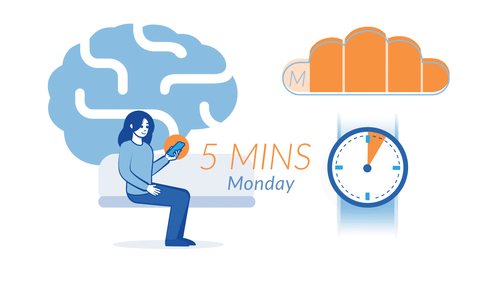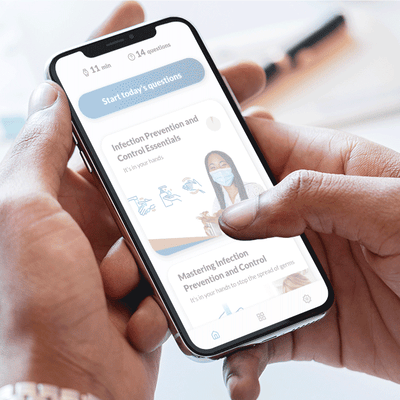How many of us remember exactly what we learnt in school or in college? We might remember pivotal moments like the graduation ceremony or our first school dance, but in terms of the content we rote learnt for years, it is a distant memory. So when we attend training sessions at work, how do we know if the content and knowledge is retained, embedded and makes a business impact? In this blog, we explore the benefits of microlearning as an alternative and how it differs from traditional learning.

Limitations of traditional learning
In traditional learning settings, learning usually is a classroom training session or enrollment in an eLearning module.
The instructor or eLearning module moderates the flow of knowledge.
Traditional classes are more suitable for young people who are yet to join the workforce. Regular attendance in classes helps them interact with others, be better disciplined and follow a regular schedule.
In the ‘real world’, employees who take part in the training set up by their managers can feel rushed. Why? Because time is limited, especially given our to-do list that grows each day. How many times do we see people multitasking at training workshops on their laptops or checking their emails while on breaks?

So, if we’re talking about a corporate setting and adult learners, a traditional sit-down classroom-style is not always the best use of time — and certainly not the most effective way to retain the information.
Unless the learning needs to be in-person because there’s a practical component, then traditional classroom-style doesn’t work — especially in this time of COVID-19.
Let’s not forget that with the pandemic, in-person environments need to be COVID-safe. Organisations have a duty of care to make sure people are safeguarded against injury and illness, which means even more reason to seek alternatives to a face-to-face.
What is the alternative?
Introducing microlearning
When training is too hard to digest and time isn’t on our side (that makes everyone really), a bite-sized approach is a great solution. Microlearning is more engaging and cost-effective to create compared to face-to-face workshops or bespoke eLearning modules. Depending on the learning objectives, microlearning may not be the best solution for every training need — but it’s an effective one for most workplace learning.

Microlearning delivers short bursts of content for employees to upskill in their own time, at their own convenience.
Content can come in a variety of formats. For example:
- Short phrases or paragraphs of text
- Photos, illustrations, diagrams and infographics
- Short videos and animations
- Audio which could be parts of a talk or music
- Quizzes
- Spaced repetition using questions and practical challenges
Five benefits of microlearning

😀 It's fun and engaging
Going back to a classroom may seem like a serious chore to some, so microlearning offers a fun and engaging method of training delivery. It’s like checking your Instagram and Twitter at the same time — but actually learning something meaningful and related to your line of work.
🤔 Better knowledge retention
It’s known that when something is studied repeatedly, revisiting the content makes learning stick. Since micro learning modules are self-paced and bite-sized, they are so easy to return to.
😎 More flexibility and freedom
Classroom-based or online learning is much more rigid in structure and not great for learning on the go. Microlearning can adapt and personalise to the individuals need and be consumed during a lunch break at a cafe, while on the train or in-between seeing clients.
🤑 It's affordable
A microlearning resource is also much more affordable to create. Shorter development time frames reduce the cost of production and time to deployment. You can get learning into the hands of your employees faster. Microlearning resources can also double as performance support on the job when employees need to refresh their knowledge on a key process or procedure.
🤓 Efficient delivery of content
Scheduling people off work and backfilling critical frontline staff to attend face-to-face learning is not always easy — or the efficient thing to do.
Save the headache and hassle — microlearning offers the flexibility to fit in learning whenever and wherever it suits your employees.
So, what’s the catch?
Limitations of microlearning
There are so many benefits to microlearning, but it depends on the topic on whether this is a suitable method of delivery. Overall,
Microlearning is not suitable for complex concepts 🙄
It’s not entirely impossible, but for more complex or highly technical subject matter, microlearning may not be suitable. Delivering a course in a bite-sized way is great for providing a high-level overview of a subject.
Microlearning is not suitable for in-depth learning 🔬
If there is a topic that requires an in-depth level of study, microlearning may not be the best solution. For example, you can create microlearning for how to be COVID-Safe at work, but perhaps not for studying the principles of molecular virology.
Thanks to the uptake of smartphones, bite-sized training has become more and more popular. With busy schedules and shorter attention spans, microlearning is a great way to deliver training in a fun, engaging and cost-effective way. Organisations can use it for a variety of training needs, such as employee onboarding, compliance training, skills development, customer service and product knowledge.

Explore Forget Me Not
Forget Me Not uses microlearning, a technique that breaks down job role knowledge into topical, bite-sized chunks that is easier for employees and better for business.
Get in touch with us for a demo to see how easy it is to embed knowledge into your organisation.
Forget Me Not is based on three key principles:
-
Little and often
Regular bites of learning and quizzing enhance knowledge retention. -
Regular breaks are critical to embed learning
Overloading or “cramming” the brain doesn’t create knowledge that “sticks.” -
Questions are more important than answers
Questions drive people to actively retrieve a piece of knowledge, and this results in improved retention and workplace practice.
